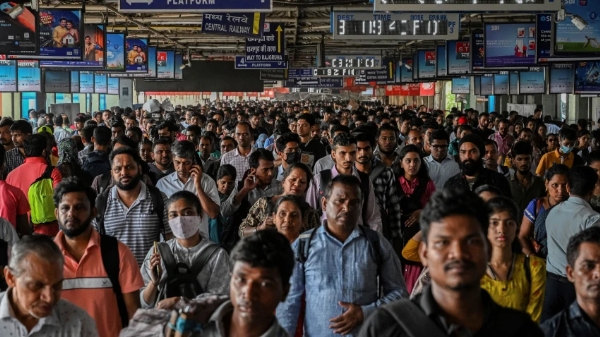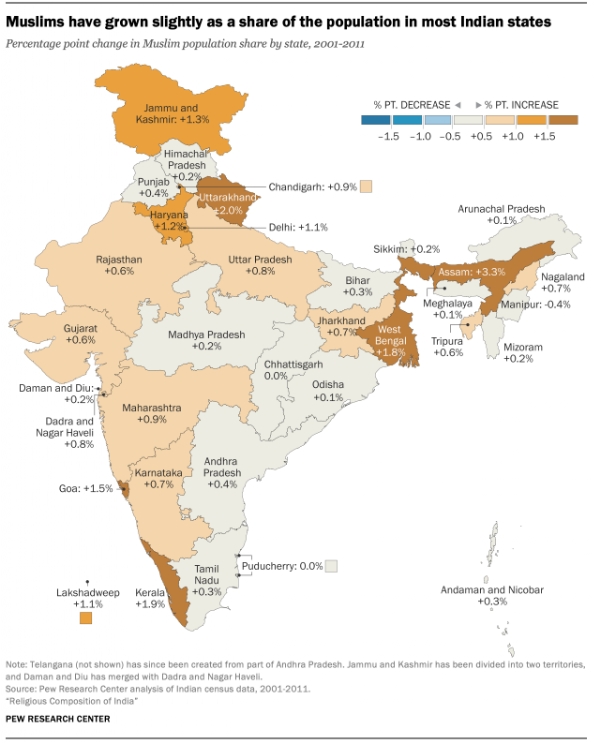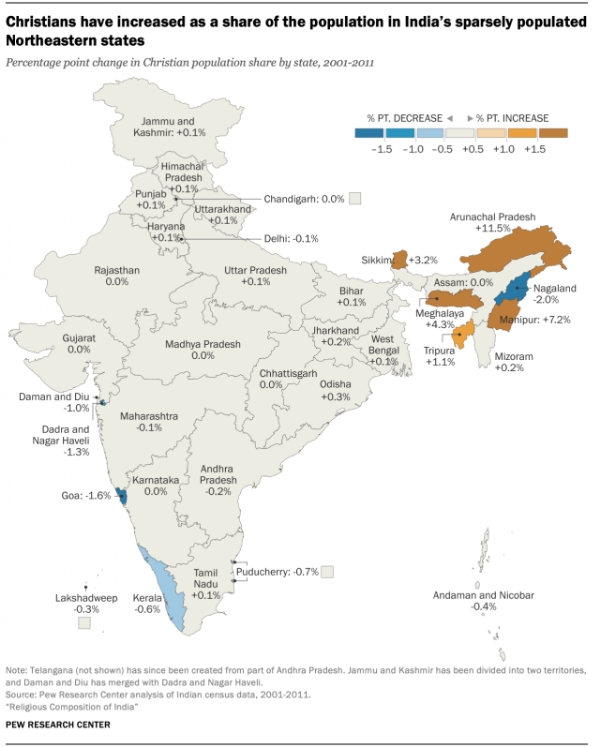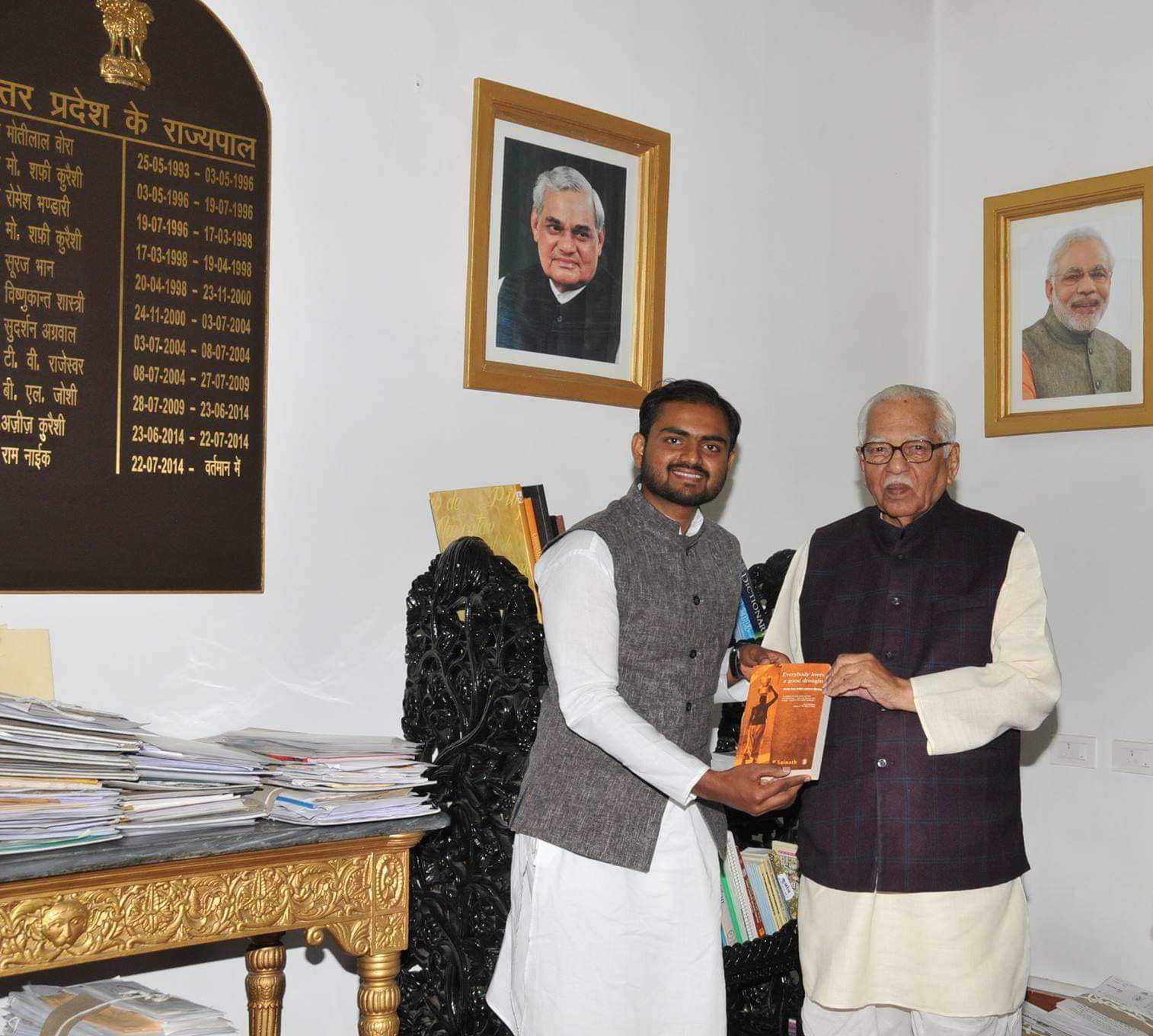World Population Day 2023: Alarming changes in Indian Demography
The global population is rising by the minute. With the rise in population, the widespread issues related to it are also accelerating.
Total Views |
Today, 11th July, is World Population Day, on its eve let us understand the relevance of Population Day and At the same time, let us understand the exact importance of this in the context of India.

History and Relevance of World Population Day
The global population is rising by the minute. With the rise in population, the widespread issues related to it are also accelerating. World Population Day is celebrated every year to create awareness and inform people of the issues pertaining to global population and the rise of it.
World Population Day 2023-Theme
According to United Nations, the theme for this year’s World Population Day is – 'Unleashing the power of gender equality: Uplifting the voices of women and girls to unlock our world’s infinite possibilities. Women and Girl Child make up 49.7% of the global population, yet women and girls are often ignored in discussions on demographics, with their rights violated in population policies.
This pervasive injustice keeps women and girls out of school, the workforce and leadership positions; limits their agency and ability to make decisions about their health and sexual and reproductive lives; and heightens their vulnerability to violence, harmful practices and preventable maternal death, with a woman dying every two minutes due to pregnancy or childbirth.
We must advance gender equality to create a more just, resilient and sustainable world. The creativity, ingenuity, resources and power of women and girls are fundamental to addressing demographic and other challenges that threaten our future, including climate change and conflict.
When women and girls are empowered by societies to exert autonomy over their lives and bodies, they and their families thrive, as the UNFPA 2023 State of World Population report illustrates.
UNFPA brings its data, experience and stories to support women and girls around the world, and World Population Day gives us an opportunity to highlight the need to advance gender equality to help realize the dreams of all 8 billion of us on our planet.
World Population Day -Significance
World Population Day focuses on bringing attention to critical issues concerning the global population. It aims to raise awareness about various challenges such as gender inequality, economic crises, and poverty. This day serves as a reminder to actively strive for the betterment of people’s lives and drive positive transformations. The United Nations celebrates World Population Day with a vision of creating a future where everyone has equal opportunities and limitless potential. Moreover, it works towards building a sustainable world in line with the goals outlined in the 2030 Agenda for Sustainable Development.
World Population Day-History
The United Nations Development Programme’s Governing Council established World Population Day in 1989, inspired by the Day of Five Billion observed on July 11, 1987. In 1990, the United Nations General Assembly, through Resolution 45/216, decided to continue celebrating World Population Day to raise awareness about population issues and their interconnection with the environment and development.
The first World Population Day was observed on July 11, 1990, in more than 90 countries. Since then, numerous organizations, institutions, and United Nations Population Fund (UNFPA) country offices, in partnership with governments and civil society, have been marking this day to bring attention to population-related concerns.
World Population - Trends
It took hundreds of thousands of years for the world population to grow to 1 billion – then in just another 200 years or so, it grew sevenfold. In 2011, the global population reached the 7 billion mark, it stands at almost 7.9 billion in 2021, and it's expected to grow to around 8.5 billion in 2030, 9.7 billion in 2050, and 10.9 billion in 2100.
This dramatic growth has been driven largely by increasing numbers of people surviving to reproductive age, and has been accompanied by major changes in fertility rates, increasing urbanization and accelerating migration. These trends will have far-reaching implications for generations to come.
A Rapidly Changing Nature of Demographic Equation poses a Threat to India
J Satyajit of the Social Studies Foundation has recently written a book called Reservation for Converted SCs: Time To Wake Up, that Flashes light on the conversion of Dalits in India and the issues it raises. In this book, he draws the reader's attention to India's significantly changing demographic equation. Mr. J Satyajeet very Scholarly tress on issue of changing Demographic order of india and how it become a dangerous for Hindu's Rights. he writes; The Population of India was 121.09 crore in the 2011 census. population of Hindu was 96.63 crore(79.8%) while Muslims Constituted 17.22 crore(14.2%).

Christian population was 2.78 crore(2.3%). Sikhs Constitutes 2.08 crore(1.7%) Buddhist population 0.84 crore(0.7%) Jain population 0.45 crore(0.4%). population of other religions was 0.79 crore(0.7%). According to this trend population of hindus, sikhs, Buddhists was in decline. christian population was stable. steep rise in the population was noted only in muslim religion. Hindu population decline by 0.1%.increase in the population only in muslim religion.its increase was 0.8%. Muslims Growth rate was the highest 24.6% according to the census report. Muslim population has been increasing since independance. in the first census , conducted in 1951, Muslim population was 9.8% and it jumped to 14.2% in 2011. the data shows that Hindu population was in decline where as muslim population was increasing at a phenominal rate.
Pew Research centre has conducted a study on projection of indian population in 2050. the report was published in february 2021. according to Pew report , Muslim population in 2050 will be 311 million with a 76% Growth Rate. Hindu Population will be 1.3 Billion with 33% growth rate. in other words, Hindus will constitute 77% of the indian population in 2050 while Muslim Population will be 18%. Interestingly again, Christian population will continue to be stable with 2%. Pew research centre has predicted that the population of other religions will be negligible. In other words, India will have only Hindu, Muslim and Christian religions while Sikhs, Buddhists and Jains will turn into Micro-minority.

This Number game I have presented above may seem beside the point, but if you take a closer look, you will realize that the changing demographics of India are very Dangerous for India's future. This may not only create a national security issue, but also the theme of this year's World Population Day; "Uplifting the voices of women and girls to unlock our world’s infinite possibilities" on the contrary these figures show a stark contrast to the theme of this year's World Population Day.
On a detailed study of the reports of Sachar Committee(2005) and Ranganath Mishra Commission(2007) appointed by the Government of India, If we notice that they have given Reccomendations about Appeasing only one religion. But considering the challenge and justification of this year's Population Day, we need to plan a population policy for the next 30 to 50 years by thinking comprehensively about all religions and their population balance.
--


